The Silver Bayonet: Egypt
Osprey zeigen auf ihrem Blog eine Vorschau zu der The Silver Bayonet: Egypt Erweiterung.
The Silver Bayonet: Egypt – Introduction
The Silver Bayonet: Egypt: Shadow of the Sphinx is out this month! For our first behind-the-scenes blog, here’s a look at the game’s introduction from award-winning author Joseph A. McCullough…
„Welcome to Egypt: Shadow of the Sphinx, a supplement for The Silver Bayonet filled with vast deserts, forgotten temples and tombs, and unique monsters, such as mummies and giant scorpions. This supplement takes the specialist units out of their comforting European surroundings and dumps them in a land of the dead. While most of us have grown up seeing images of the Great Pyramid, of Luxor, and of the great dunes of the Sahara Desert, most Europeans at the time of the Napoleonic Wars couldn’t have even imagined such things. To the soldiers sent across the Mediterranean, it probably felt like visiting another world where the basic rules of life and survival no longer applied. If they knew anything at all about Egypt, it probably came from ancient texts that talked about the glory of the Pharaohs, the conquests of Alexander the Great, and the downfall of Cleopatra – information a couple millennia out of date.
This is part of what makes Egypt such an exciting setting for The Silver Bayonet; it comes with a baked-in fear of the unknown. Most Europeans have at least heard of a werewolf, even if they pray never to encounter one. On the other hand, a walking corpse, completely wrapped in bandages, with the strength to pull a man’s head off is a completely unexpected terror. And that’s just the supernatural threats. Again, while we modern folk are used to seeing crocodiles in zoos and on television, those poor Europeans who first saw them bursting out of the waters of the Nile probably took them for dragons or assumed that they were servants of the devil. Their holy symbols, unfortunately, would have no effect.
A black and white, stylised, sketch-like illustration of a monstrous crocodile crawling out of the Nile under a crescent moon, next to the broken feet of a giant ruined statue
As such, not only does the setting immediately stir the imagination and present new story-telling options, it changes the game in other significant ways as well. Desert sands, punishing heat, and very limited water sources are unusual in the generally green lands of Europe, but are integral to adventuring in Egypt. This allowed me to introduce special rules that players can work into their scenarios and campaigns that present new challenges, even for veteran monster hunters. For the players, they can really go to town on a completely new look to their gaming tables. Forget the green felt mat, the towering oak trees, and the buildings of grey stone and wood covered in moss and ivy. Now players can build tables based upon the sand (well, probably a sand-coloured mat, unless you really want to go all out!) and decorate their table with the unique architecture of Egypt, both ancient and contemporary. Now you have a use for those hieroglyphic covered obelisks you’ve always seen for sale in museum gift shops but could never quite justify buying! Throw in some fallen columns, giant sand-weathered blocks, a few hills painted a sandy beige, and some palm trees surrounding a small pool of water and you’ve got a table that looks and feels completely different. Of course, none of this is necessary to play the scenarios presented in this book, but hopefully players will see it as an opportunity to take their terrain collection in a new direction.
It’s not hard to imagine why specialist units might get sent to Egypt. It is a land of magic and secrets, a land whose ‘civilisation’ reached its peak before even the Ancient Greeks. If anywhere might hold magics older and more powerful than the Harvestmen, surely Egypt is the place? But, thinking about it further, I figured there might be a very specific reason to involve the specialist units. Historically, Napoleon invaded Egypt with a rather weak strategic justification. The campaign was a failure in almost every sense, and yet, somehow, Napoleon comes out of it stronger than ever and continues his meteoric rise to Emperor. Perhaps then, Napoleon led his army across the sea for much more personal reasons? Perhaps he was looking for something, some key to power? This is the question that drives the specialist units in the two campaigns I have written for this book, one competitive, the other solo. If the specialist units can figure out how Napoleon obtained his power, perhaps they can also determine how to defeat him? Unless, of course, you are playing a French unit, in which case you’ve obviously been sent by The Little Corporal to protect his secrets.
A black and white, stylised, sketch-like illustration of a Napoleonic soldier with an eyepatch and cloak mounting a camel, with a khopesh and human skulls hanging from the saddle
Along with those two campaigns, and the new setting rules mentioned above, this book also presents a new army list for the Egyptians, including several new and unique soldier types. It also includes a bestiary filled with Egyptian-themed monsters, both to give new gameplay experiences and a good excuse to collect some more cool miniatures. I’m sure that, once players have fought through all the scenarios contained in this supplement, they will want to construct their own to continue using their new terrain and miniatures. Like the vast deserts, the opportunities for adventure in Egypt are nearly endless.
I hope that everyone enjoys this new book and that it fires their imaginations. I have done my best to present you with new tools and toys to play with, but at the end of the day, only you can truly make the game fun. So, invite over a few friends, fill-up the snack bowl, put on some theme-appropriate music, and get to rolling some dice! And when it’s over, let us all know how it went by posting about the game on social media, such as The Silver Bayonet Facebook page. I love reading battle reports, hearing about custom scenarios, and seeing all the cool figures and terrain people paint. Your enthusiasm feeds my own and keeps me writing!
If you would like to keep up with all my game-design and writing for this game and others, you can follow me on my website – josephamccullough.com.“
The Silver Bayonet: Egypt: Shadow of the Sphinx is out May 23rd in the UK
and will be out in the US June 25th.
The Silver Bayonet: Egypt – Book Extract
The Silver Bayonet: Egypt: Shadow of the Sphinx is out a week today! For our second blog, we’re giving you a sneak peak at one of the supplement’s new Egyptian playable units…
As well as a host of new monsters, new rules, and one competitive and one solo/co-op campaign, The Silver Bayonet: Egypt also introduces a brand-new faction to the wargame of Napoleonic Gothic Horror – Egypt. Before we give you a sneak peak at the full Egyptian recruitment list, here’s what author Joseph A. McCullough had to say about this new Nation:
„When players pick up a new The Silver Bayonet book, I suspect most immediately flip to the new soldier types available. For this title, I included one new Nationality – Egypt – but this added several different troop types, some of which may also be recruited by other nations. Egypt was a mess politically during this period – theoretically part of the Ottoman Empire, but ruled in reality by the Mamelukes. So, while the book contains Egyptians, including worshippers of the ancient gods, there are also stats for Mamelukes, Bedouin raiders, Ottoman Janissaries, and I even squeezed in a Knight of Malta (as Napoleon captured Malta on the way!).“
– Joseph A. McCullough, author of The Silver BayonetAn extract from The Silver Bayonet: Egypt, reading: „EGYTIAN RECRUITMENT LIST: Artillerist, Bedouin Raider, Champion of Faith, Doctor, Egyptian Conscript, Follower of the Old Gods, Infantryman, Irregular, Janissary, Junior Officer, Light Cavalryman, Mameluke, Native Scout, Occultist, Sailor, Sapper, Supernatural Investigator, Veteran Hunter
You’ll notice there are a bunch of entirely new and exciting soldiers, and we’re giving you more information about one in particular on today’s blog. Check out a tease of the Janissary’s unit description below – alongside an awesome piece of artwork by Brainbug Design and the North Star Military Figures sculpt that it inspired…
An illustration in a black and white, sketch-like style depicting a Napoleonic-era Egyptian soldier wearing a turban and eyepatch, holding a blunderbuss, and with a curved sword at his hip A photo of a fully painted miniature figure for wargaming, closely modelled on the previous illustration
„JANISSARY
Nationalities: Egypt
At one time, the Janissaries were the elite infantry of the Ottoman Empire. However, by the
time of the Napoleonic Wars, their numbers had hugely multiplied, while their glory and
once vaunted martial prowess had faded. The Janissaries found in Egypt are perhaps even less
notable, as they served in a ‘backwater’ territory barely under Ottoman control. Still, most
Janissaries were competent soldiers, as deft with a musket as with a blade.“To find the Janissary’s full stat block – and for even more unique Egyptian units from Bedouin Raiders and Mamelukes to Followers of the Old Gods – get your copy of The Silver Bayonet: Egypt.
And find the rest of the all-new, official Egyptian Unit miniatures on the North Star website.
The Silver Bayonet: Egypt: Shadow of the Sphinx is out May 23rd in the UK
and will be out in the US June 25th.
Quelle: Osprey Publishing


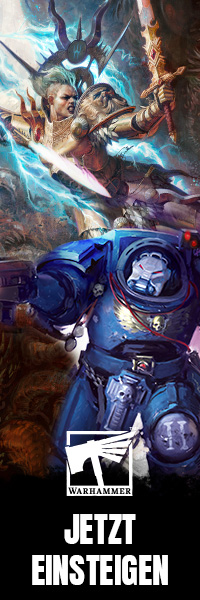
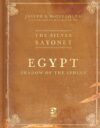
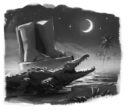
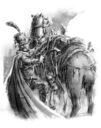
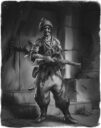


Kommentare